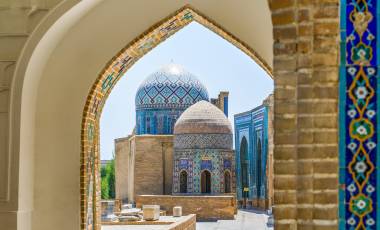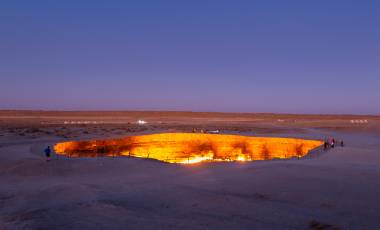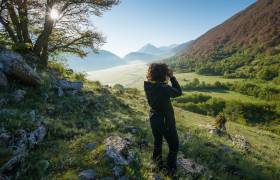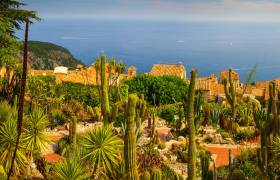Read time – 4 minutes
The Silk Road: part 1 of 2 Exodus’ Tom Harari takes us on the trail of ancient traders along Asia’s iconic Silk Road.
One sunny afternoon the Empress Leizu was sipping tea under a mulberry tree when a silk worm’s cocoon fell into her cup. In an attempt to fish it out, the young lady started to unravel the cocoon into a thin thread. Deciding to weave the thread, she discovered silk, and from her discovery was born the greatest trading route the world has ever known: the Silk Road.
History of the Silk Road
The Silk Road, actually a network of routes through Central Asia, connects some of the greatest cities ever built, which sprung up from the desert and steppe between China and the Mediterranean. The names of these cities alone spark romantic images of the orient: Samarkand, Bukhara, Kashgar.
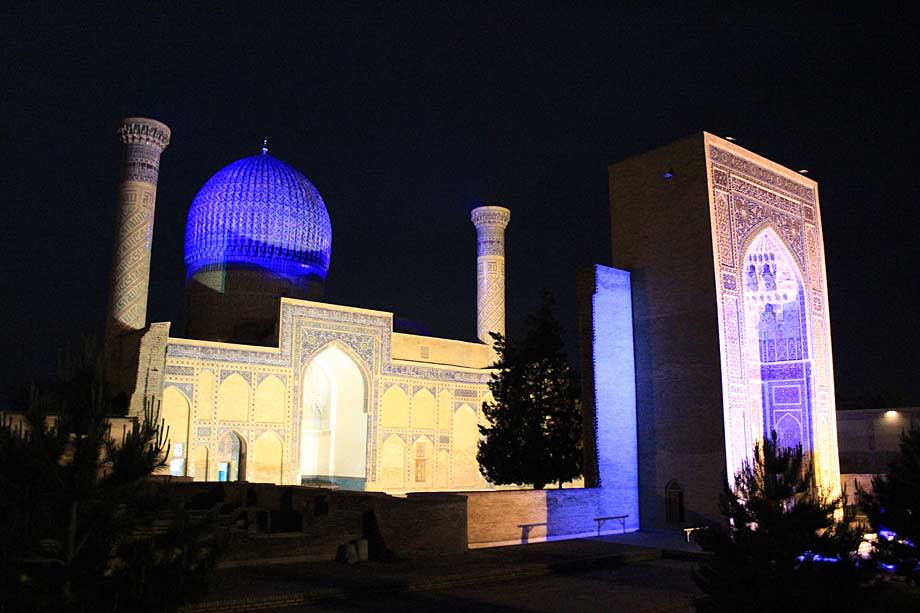 Samarkand after nightfall
Samarkand after nightfall Through the ages, everyone from Alexander the Great to Marco Polo and Genghis Kahn left their mark whilst, on the periphery, local tribes lived a nomadic existence of horsemen and eagle hunters. This constant flux of people has left the region a melting pot of cultures – a mix of Uzbek, Kazakh, Kyrgyz, Tajik, Pashtun, Russian, Ukrainian, Tartar, Mongol, Uighur, Han, Korean and Turkmen amongst others.
In the 19th century, the stage was set for the Great Game as foreign powers wrestled over control of the region before much of it eventually became part of the Soviet Union in the early 20th Century.
Journey along the Silk Road
As for my journey, it started in the Uzbek capital, Tashkent. We made our way along wide boulevards smattered with squat Russian Ladas towards our imposing Soviet-era Hotel Uzbekistan. As an introduction to this ex-Soviet Republic, I couldn’t have asked for better.
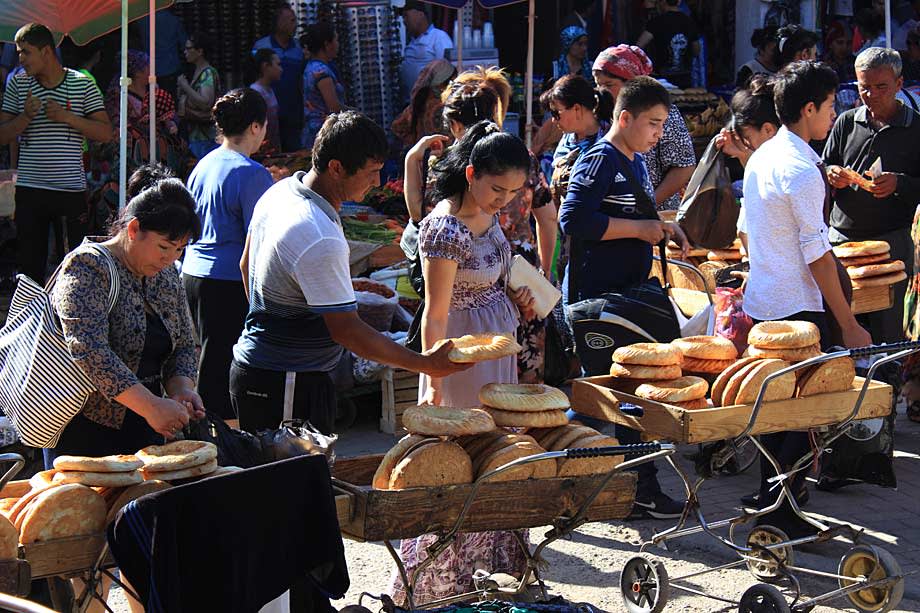 Bread vendors, Tashkent
Bread vendors, Tashkent But Tashkent is not why people come to Uzbekistan, and soon we were whisked away to the first big name on route: Samarkand. As I would come to learn during this trip, this is a part of the world that has seen a lot of comings and goings and Samarkand is no exception.
It was here that Tamerlane created the capital of his conquered kingdom, which stretched from parts of India and China all the way to Syria, Anatolia and the Caucasus. Many of the spectacular buildings which Samarkand is blessed with originate with Tamerlane and his descendants, in particular his grandson and great astronomer, Ulug Beg.
Registan Square
Peppered around the city are ancient mosques and madrasahs covered in intricate blue tiles which gleam in the warm sunlight. Chief amongst these is the Registan Square, flanked on three sides by spectacular Islamic madrasahs – the Tilya Kori Madrasah, Ulug Beg Madrasah and, most beautiful of all, Sher-Dor Madrasah. The fourth side is open, giving an amazing vantage point from which to gaze out at the square.
It was here that we first came across the incredibly warm Uzbek tourists who were just as curious about us as we were about them. This was to be a feature of our time in Uzbekistan, fantastic interactions attempting sign-language conversations and group photos from both parties.
In fact, the wonderful buildings of both Samarkand and Bukhara were really just the backdrop for meeting amazing people, or when not meeting them, just people watching was a delight. Even in the necropolis of Samarkand, where the mausoleums were tiled with trademark blue or Ulug Beg’s observatory, I ended up distracted and watching the world go by: the men in elegant suits and skull caps and the women in headscarves and colourful dresses visiting the sites or just walking the streets.
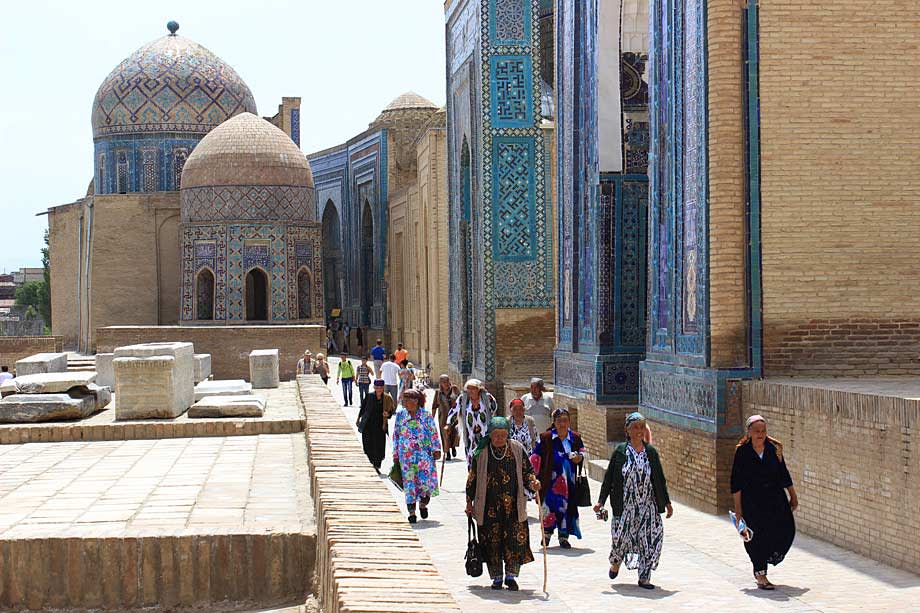 Necropolis, Samarkand
Necropolis, Samarkand Whilst Samarkand has some spectacular sites, the city is fairly modern. Bukhara, on the other hand, has a proper old town, one which has been there for over 2,000 years. At its heart is a square with a massive pool or fountain.
As we headed out for dinner the square was lively with children playing and people sat and chatting, and again I had that great feeling of just soaking in the atmosphere – though as it turns out places close relatively early so it had quietened down after we finished our dinner.
The following day was dedicated to the city, from market to madrassah, mausoleum to summer palace (photo sat atop a camel anyone?). Seeing a school group; having lunch overlooking the Kalon Minaret; listening to a musician in the market; and, as had become customary, sharing group photos and having what were, no doubt, cross-wired conversations with local Uzbeks.
It’s a fantastic city and the sense of history is everywhere. Letting my imagination run I tried to imagine what it must have been like in its heyday with mingling people from different places trading or taking respite from the ardours of the journey.
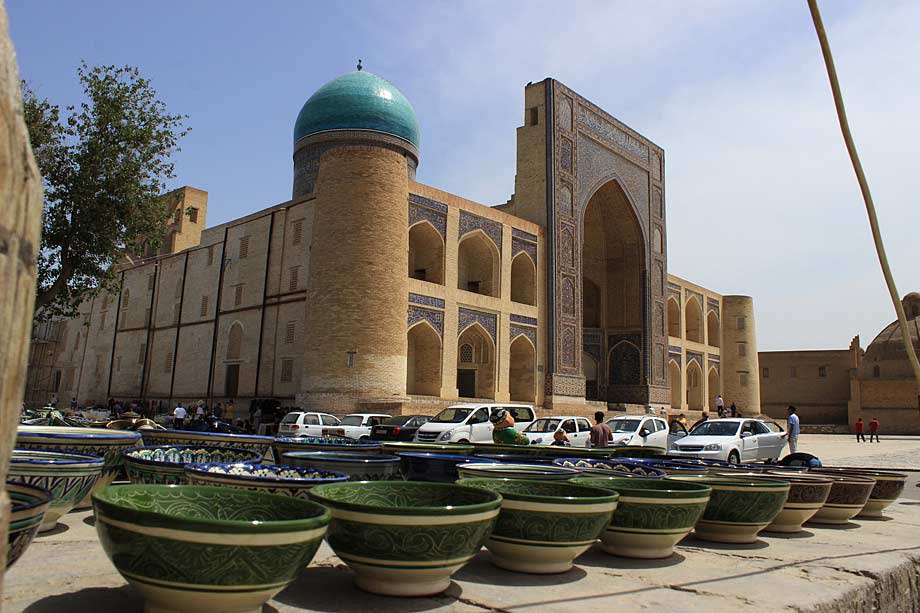 Po-i Kalyan, Bukhara
Po-i Kalyan, Bukhara But like the ancient traders following the Silk Road, the time had come to move on. We headed east, on a sleeper train and in what the Uzbeks referred to as a ‘car caravan’ of four vehicles whisking us, after a city tour of Tashkent, to the fertile Fergana Valley visiting a local ceramic workshop on the way.
Here we were greeted by some excited children who waved and smiled widely at us before being treated to a demonstration of pottery making and cups of the ubiquitous Uzbek tea.
 Ceramic potter, Fergana Valley
Ceramic potter, Fergana Valley There was one more thing to do before leaving Uzbekistan behind: visit a silk factory. The Chinese held on to the secret of silk-making for a long time but a descendant of the Empress Leizu did eventually gave it up.
Today, this region is one of main silk-producers, which is still done in a traditional way. Boiling the cocoons, unravelling the thread and spooling it before weaving cloths and rugs – the latter of which takes a tremendous amount of skill and time. The whole process is fascinating and left me in awe of the men and, mostly, women who worked there.
 Weaving a silk rug, Fergana Valley
Weaving a silk rug, Fergana Valley And so, after a few days exploring two of the greatest cities in Central Asia, catching an overnight train, experiencing the remnants of the Soviet era as well as modern Uzbekistan (what do you think all those group photos were taken on, phones of course) it was time to depart for the next part of our journey.
Our car caravan dropped us off at the border and we headed towards Kyrgyzstan, en route for Kashgar in China.
Where next? Read part two.
Fancy a journey along the Silk Road? Take a look at our trips below.

